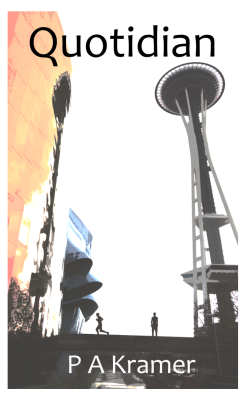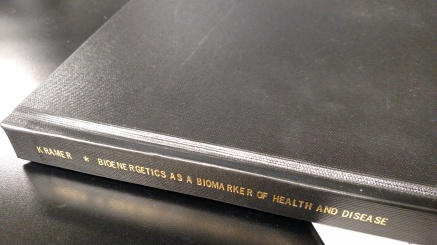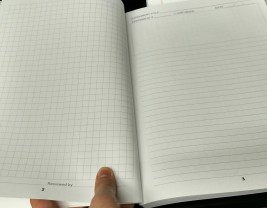It wasn’t until midway through my first novel that I began to think about publication. I was in my early twenties, and didn’t know anything about it. Like most writers, I slowly began to educate myself on the different types of publications and the process of becoming published. After nearly ten years, I still have a lot to learn, but I am happy to say that since I began taking writing seriously, I have gained a bit of practical experience in publishing.
Publishing my own words and ideas is a very fulfilling process. It isn’t the same as relating your day-to-day experiences to friends on Facebook. Face it, nobody really cares what you ate for breakfast. This fulfillment comes from communicating an idea, an emotion, a complicated theory, a story, or some other form of insight about the world that few people would have readily come to on their own. While writing is fun, I am not one of those writers who claim to write for themselves. Words were made to communicate, and communicating with yourself seems a little pointless to me.
Ideas are like viruses and words are their genetic code. When someone is exposed to an idea, it sometimes takes hold, and that person becomes a carrier, propagating that idea to other hosts. I want my ideas to reach people, to spread, to replicate like a virus. Not all ideas are dangerous, and some can change peoples’ lives for the better.
Here are a couple of the ideas and stories I have already released into the world. Many of them will not spread, but I hope they will affect (infect?) some people eventually.
My stories.
Speaking of viruses, the latest of my published stories was about a virus that destroyed people’s self-control and drove them to violently seize anything they desired. The possessive irrationality would not leave them until they had what they wanted and hid it away in a secret hoard. The young protagonist must fight to survive among the Hoarders, but even the uninfected are not to be trusted. This short story is called Want, and I published it with my writers group, Alabards, as a part of a horror anthology.
In the first book of our anthology series, I published a short story called Blue and Green Horizons. This story is about a man who had become a paraplegic in the past year due to a sky-diving accident. He has very little memory of the incident, recalling only the blue and green horizon as he leapt from the plane. He still has no idea why he deployed his parachute so late. The story takes place on a trip to a friend’s wedding. They are taking the train because he doesn’t feel comfortable on planes. When the train derails within a tunnel, he is the only one who can save the other passengers, but first he must fight his own insecurities and come to terms with his disability.

Off-kilter and Off-kilter2 available on Amazon
This isn’t my only experience in the area of self-publishing. For the past few years I have been printing beta-reader novels through Lulu. The only difference is that I chose not to assign it a ISBN or make it available to anyone else but me (technically it’s never published). I highly recommend this method for beta-reading as it allows the readers to see the book in their hand and in a professional format. If you choose to self-publish (I haven’t decided yet), then it will also allow the readers to comment on format and cover design. I also suggest inserting a couple of questions at the end of each chapter in the beta-reader version. This will allow the reader to jot down their impression for each chapter rather than try to recall everything at the end. I am currently preparing my novel Quotidian this way. It will be ready for beta-readers early next year. Please contact me if you wish to be a beta-reader.

The working cover and title for my latest book. Seeking beta readers.
My laboratory notebook.
A couple years ago, I was in my last year of graduate school and I got fed up with the laboratory notebooks currently available. I liked to outline my experiments by making a flow-chart first, then I would write down the protocol, and then I could record and paste the results. No one laboratory notebook was organized in such a way and nor did they have dedicated spaces for a table of contents, title, dates, signatures, etc. So I decided to make my own.
After designing the lab notebook and ordering several for my lab, I reached out to the founder of several private schools in Atlanta. Her science lab needed just such a lab notebook. I made a few changes to the format and added her school’s logo to the cover (a cover that can easily be personalized and decorated), and so far they have ordered hundreds of copies for their kids. “They are a staple to the program now,” she says.

The lab notebooks I made for the Midtown International School in Atlanta, GA separated by class and filled with the kids’ science experiments.
I would encourage all writers with some knowledge of self-publishing and book formatting to put that knowledge to work. You can make calendars, planners, cook books, etc, for your own personal use or to sell. There is no reason why anyone should be confined to publishing novels when they have all the skills necessary to dabble in other publishing formats.
My research.
I was surprised to discover that my day job also provided me with practical publishing experience. Throughout grad school and my post-doc, I have been constantly constructing, writing, editing, and then publishing research papers. Science writing is very different from fiction writing in both style, tone, and wordage, but it still requires extensive planning, editing, and communication with editors and publishers.
My largest published work is my dissertation. Anyone who has ever written one will agree that the formatting is almost as tasking as the writing.
While my 20ish articles and reviews are something many will likely never read, they are at least reaching other researchers who can build off my research findings and theories to help probe a little deeper into the mysteries of biology and disease. According to ResearchGate, my publications have been cited nearly 200 times in other publications since 2013.

Take home message.
With that, I will leave you with one last consideration. Building your publishing presence is just as much about quality as quantity. Just because you have written something doesn’t mean that it is ready to be released into the world. I am proud of each and every one of my publications, but I still see a lot of room for improvement. Many of my readers will see it too. So unless you are confident that you know how to format a book, design a cover, and edit a story until it gleams, I suggest you take the time to learn how or to consult with professionals. Otherwise your reputation as an author will be marred by your haste to release your stories and ideas into the world. For example, I never could have created the amazing covers that grace the front of our short story anthologies, so I reached out to an old friend and graphic designer who had the skills and eagerness to take on the project. Thank you, Matt.
There is a common mentality among authors and artists to keep everyone ignorant of the project until it is ready to be released. Perhaps it is a fear that other people’s opinions or meddling hands will corrupt it in some way. These works most often fail because nobody has any stake, interest, or investment in the project. Getting beta-readers, cover designers, editors, and other writers involved in the project, even to a small degree, will link them to the project. These people will be the ones to help market the book once it is published because they can proudly say they read it before anyone else, helped edit it, etc. It can only benefit the author to bring others into the fold, especially if it means a more polished and marketable product.

Beta reading a hard copy! Now there’s an idea. Sounds like fun.
LikeLiked by 1 person
Thank you for sharing!☺️
LikeLiked by 1 person
I am so impressed with you right now. I know Jamie has a copy of Off Kilter with your signature, if I’m not mistaken. If I buy a copy, you better see to it that you also personally and in-person sign mine. 🙂
LikeLiked by 1 person
Come visit me in Seattle and I’d be happy to sign it. 😉
LikeLike
Oh, and let us write a book together. 🙂
LikeLiked by 1 person
That sounds fun. What genre are you thinking? Let’s do a space drama. It combines two of our favorite things. Haha.
LikeLiked by 1 person
A space drama? Interesting. I was thinking horror, so maybe a horror set in space? 😉
LikeLiked by 1 person